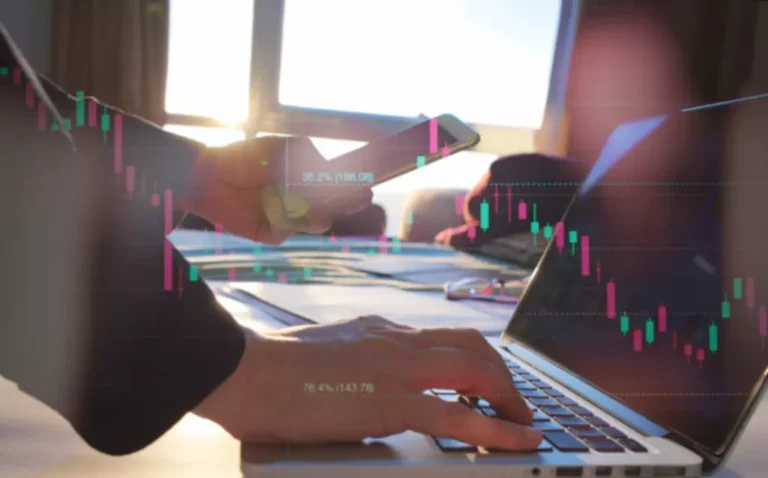Importance Of Low Latency For Cryptocurrency Exchanges
Whether you're a seasoned dealer or new to crypto, Coinefficiency helps you maximize your earnings with data-driven insights. Information latency refers back to the time delay in data delivery within a trading system. It is essential for traders to reduce this delay to make sure well timed access to market info. The shorter the crypto transaction speed, the faster customers can execute trades and work together with decentralized purposes. Excessive latency, on the opposite hand, may find yourself in delays that will result in misplaced alternatives, especially in the fast-paced world of cryptocurrency buying and selling.

What's Latency In Cryptocurrency Trading?
When deciding what trading platforms to use, traders regularly consider trade latency. Low latency in cryptocurrency trading requires optimization of hardware and software program, clever order routing, and efficient compliance procedures. Many cryptocurrency traders make use of algorithmic trading techniques that call for quick order execution and data evaluation. For algorithmic traders to implement their tactics successfully and keep market dominance, low latency is crucial. Market latency describes potential pauses or lags in the Bitcoin (BTC) market. Exchanges might face delays in processing orders and updating order books throughout times of excessive volatility or intensive buying and selling Low Latency exercise.
For merchants who use HFT ways, lower order execution latency is essential as a result of even a millisecond of delay can lead to misplaced trading probabilities. Since high-frequency traders need to execute numerous offers in a short period of time, decreasing latency is their prime priority. High-frequency trading (HFT) is a buying and selling technique that uses ultra-fast computer systems and algorithms to carry out a lot of trades in a short time frame. HFT corporations use speed, low latency and cutting-edge technology to obtain a aggressive edge within the financial markets by seeking to profit from tiny price differences. Community latency consists of delays caused by the pace and reliability of an internet connection as properly as the physical distance between a trader’s location and the exchange’s servers. In order to minimize back network latency, merchants incessantly utilise co-location services, the place their trading servers are bodily situated near the exchange’s computers.
Spot Bitcoin Etfs Finish Six-day Outflow Streak With $219m Inflows
For HFT traders, order execution latency must be as little as possible, as even a millisecond of delay can lead to missed buying and selling alternatives. A trader’s buying and selling program or algorithm might require a particular amount of processing time, which could end in a software delay. For this sort of latency to be decreased, software program needs to be optimized for velocity and effectiveness. The term “latency” in cryptocurrency buying and selling refers again to the delay or lag in the amount of time it takes for knowledge to move between two points in a buying and selling system.
Furthermore, low latency offers a competitive edge within the volatile crypto market. Merchants can even use low-latency order routing and matching applied sciences that shrewdly choose the venues with the quickest execution instances. It is essential to use trading platforms and change APIs with low-latency features. Buying And Selling platforms with low latency enable merchants to execute orders rapidly, lowering the chance of value adjustments throughout order placement. Due to order execution delays introduced on by high latency, traders might lose cash or miss out on worthwhile market adjustments.
To cut back network latency, traders incessantly make use of co-location services, the place their buying and selling servers are physically close to the exchange’s computer systems. These algorithms should shortly analyze market data, attain clever judgements, and perform instructions. The use of parallel processing, efficient knowledge constructions and code optimization are important. Achieving low latency in cryptocurrency buying and selling requires hardware and software program optimization, sensible order routing and environment friendly compliance procedures for velocity. Order execution latency is the amount of time it takes for an order to be sent from a trader’s buying and selling platform to the exchange, processed by the change, and then executed.

Step 3: Performance Benchmarks
If the blockchain community experiences latency issues, there could also be a delay in order execution. This delay can end result in unfavorable prices, especially in a unstable market the place cryptocurrency values can shift dramatically within seconds. Due to latency points, it can be troublesome to execute transactions on the desired prices, which may amplify the effects of value fluctuations.
- In general, a trader’s odds of efficiently making trades in the cryptocurrency markets improve with the speed at which they'll obtain and act on market data.
- In common, a trader’s possibilities of making worthwhile transactions on cryptocurrency markets improve with their capacity to amass and act on market data rapidly.
- Order execution latency is the amount of time it takes for an order to be despatched from a trader’s trading platform to the exchange, processed by the trade, and then executed.
- To ensure that response instances stay optimum even beneath heavy utilization, scaling calls for ongoing optimization and infrastructure enhancements.
- Managing latency offers a competitive edge and aids in danger management by permitting more correct and well timed selections.
HFT firms make the most of speed, low latency, and cutting-edge expertise to achieve a competitive benefit in the monetary markets by exploiting minute price differences. It takes into consideration the transit time between cryptocurrency exchanges and a trader’s trading platform for data https://www.xcritical.com/ on prices and order books. Additionally, merchants must effectively negotiate regulatory issues and compliance necessities.
The influence of latency on a trader’s capability to execute orders and make knowledgeable decisions could additionally be substantial. In order to realize a competitive benefit within the fast-paced world of cryptocurrency buying and selling, latency have to be minimized as a lot as potential throughout the entire buying and selling process. While lowering latency is crucial for real-time purposes, the safety of data and methods should not be compromised.
Low latency is important for merchants using arbitrage and algorithmic strategies. Managing latency provides a aggressive edge and aids in risk management by allowing more accurate and timely choices. Lower latency can create opportunities for arbitrage by exploiting price Digital asset variations throughout exchanges.
As talked about earlier, order execution delays due to high latency causes traders to lose income or miss out on profitable market opportunities. Trading platforms have to be swift in executing orders to attenuate the effect of value fluctuations. It Is time to discuss the 5-step process to modernize a cryptocurrency change, but first, let us take a glance at how latency impacts crypto trading.
The delay induced by the actual parts of a trader’s computer or server structure is known as hardware latency. Using high-performance technology, this sort of latency could be lowered, resulting in faster order execution and information processing. In cryptocurrency buying and selling, “latency” refers again to the delay or lag in the time it takes for information to maneuver between two locations in a trading system.
Latency in blockchain networks is an important issue that influences not only the efficiency of transactions but in addition the general consumer expertise. Understanding Blockchain Latency is important for developers, investors, and users who're actively engaged within the crypto market. As transactions transfer throughout the network, the time it takes for them to be confirmed can impression numerous elements of blockchain functionality.
Comment